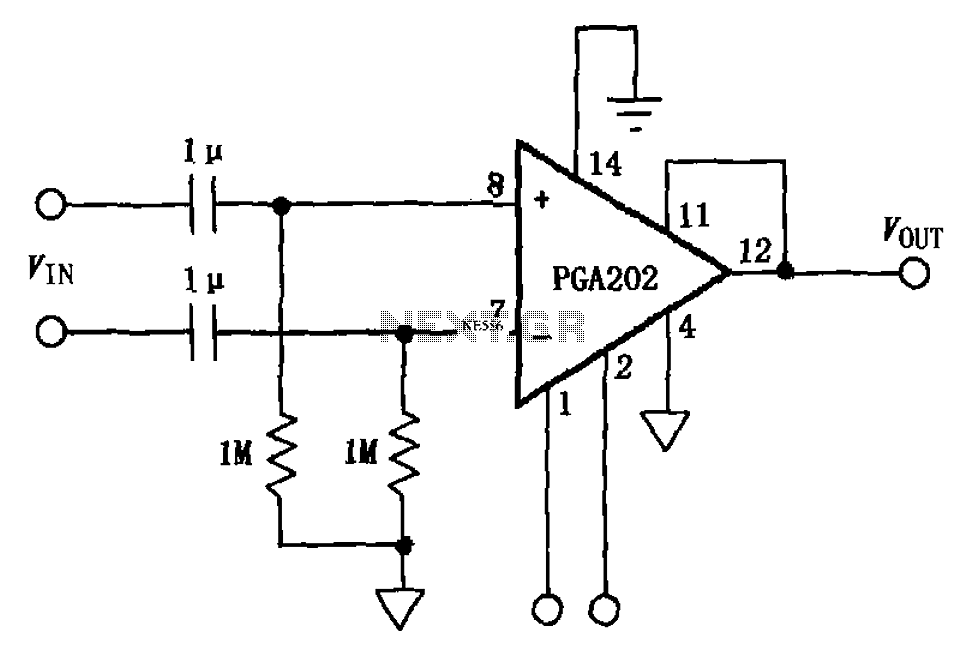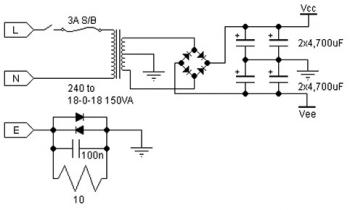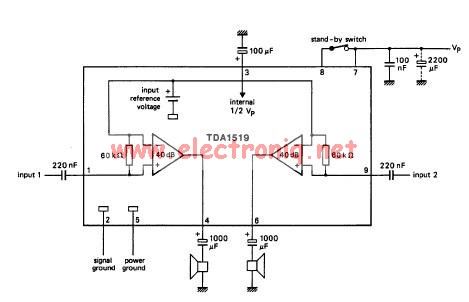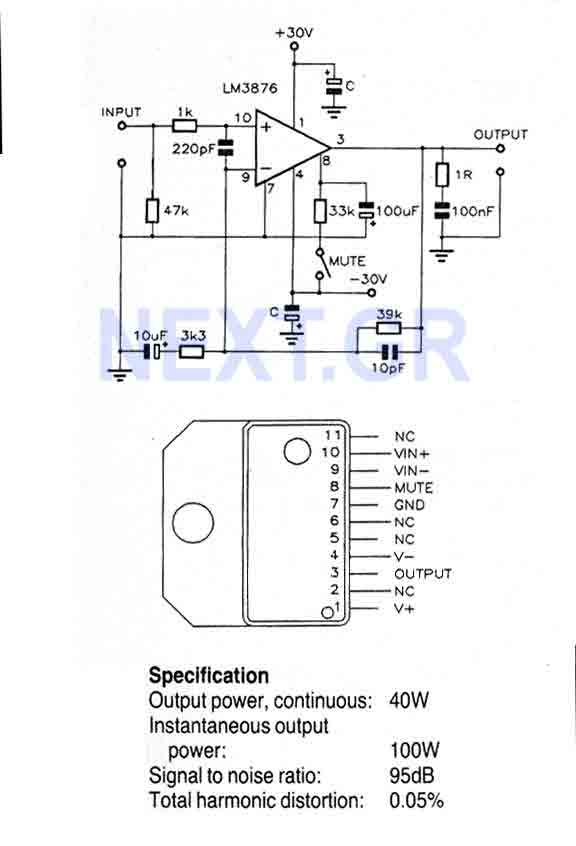
AC-coupled differential amplifier PGA202

The circuit illustrated in FIG PGA202 comprises an AC-coupled differential amplifier. The input stage of PGA202 includes two 1 µF capacitors and two 1 MΩ resistors, resulting in a cutoff frequency of approximately 0.16 Hz. The Qualcomm AC coupling circuit processes the AC signal input before it is amplified by the differential amplifier PGA202.
The PGA202 circuit operates as a differential amplifier designed for high-performance applications, particularly in audio and signal processing. The AC coupling is achieved using the two 1 µF capacitors, which effectively block any DC offset present in the input signal while allowing AC signals to pass through. This is crucial in maintaining signal integrity and preventing saturation of the amplifier.
The two 1 MΩ resistors form a voltage divider with the capacitors, setting the input impedance of the circuit and determining the low-frequency response. The calculated cutoff frequency of approximately 0.16 Hz indicates that signals below this frequency will be attenuated, while higher frequency signals will be amplified. This characteristic is essential for filtering out unwanted low-frequency noise, ensuring that only the desired AC signals are processed by the amplifier.
In practical applications, the output of the PGA202 can be connected to further signal processing stages, such as additional amplification or filtering circuits. The design is particularly suitable for audio applications, where maintaining the fidelity of the signal is paramount. The use of high-value resistors and capacitors allows for a compact design while achieving the necessary performance specifications. As shown in FIG PGA202 constituted by AC-coupled differential amplifier. The circuit at the input PGA202 plus two 1 F capacitors and two 1M resistor composition frequency 0.16H z above Qualcomm AC coupling circuit, after the AC signal input differential amplifier PGA202 output.
The PGA202 circuit operates as a differential amplifier designed for high-performance applications, particularly in audio and signal processing. The AC coupling is achieved using the two 1 µF capacitors, which effectively block any DC offset present in the input signal while allowing AC signals to pass through. This is crucial in maintaining signal integrity and preventing saturation of the amplifier.
The two 1 MΩ resistors form a voltage divider with the capacitors, setting the input impedance of the circuit and determining the low-frequency response. The calculated cutoff frequency of approximately 0.16 Hz indicates that signals below this frequency will be attenuated, while higher frequency signals will be amplified. This characteristic is essential for filtering out unwanted low-frequency noise, ensuring that only the desired AC signals are processed by the amplifier.
In practical applications, the output of the PGA202 can be connected to further signal processing stages, such as additional amplification or filtering circuits. The design is particularly suitable for audio applications, where maintaining the fidelity of the signal is paramount. The use of high-value resistors and capacitors allows for a compact design while achieving the necessary performance specifications. As shown in FIG PGA202 constituted by AC-coupled differential amplifier. The circuit at the input PGA202 plus two 1 F capacitors and two 1M resistor composition frequency 0.16H z above Qualcomm AC coupling circuit, after the AC signal input differential amplifier PGA202 output.





